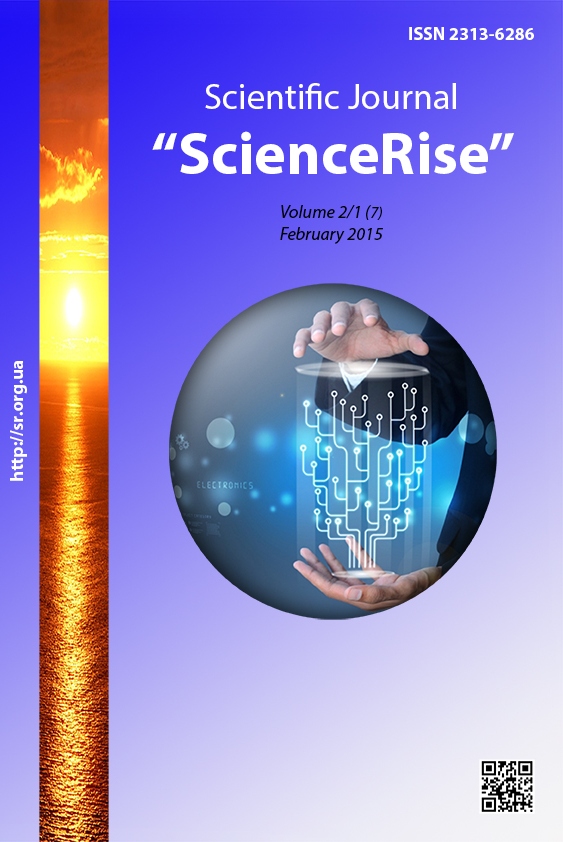Cancerogenic substances in modern cosmetics
DOI:
https://doi.org/10.15587/2313-8416.2015.37400Keywords:
health, cancer, world, Ukraine, disease, risk, chemical matters, way of life, carcinogens, cosmetic productsAbstract
The method of the presented research was a scientific analysis of literary data. In the article the given information is about the increase of morbidity and death rate from a shrine in the whole world and in Ukraine in particular and to influence on this situation of external carcinogens which some constituents of cosmetic facilities are among.
Results of researches. By basic obvious carcinogens which are contained in modern cosmetic products are: DEA Diethanolamine, khimikat, which is used not only in creams but also in clearing Cosmetology.
MEA (Monoethanolamine) chemical absorbent, used in Cosmetology for the delete of gases. TEA (Trithanolamine) – used as konservant, BHA (Salicylic acid (Beta-oksikislota)) dissolves fat and able to primp and clear muddy pores. BHT (Butylated Hydroxytoluene) – used as an antioxidant in creams and in a meal (E321).
Conclusions. The Oncologic diseases occupy conclusions leading place in the death rate of people all over the world. Scientifically grounded is that matters which stimulate development of cancer tumours are, and such matters name carcinogens. . Some of such mortally hazardous substances can be component parts of modern cosmeticology facilities. And as Cosmetology exists already thousand years and, probably, it will exist, while living though one woman, for today vitally a necessity is knowledge and ability to use information about the constituents of cosmetic facilities and feature of their application. Only such approach will allow to avoid harmful consequences for a health and eventually to save the life.
References
Boyle, P., Leon, M. E. (2002). Epidemiology of colorectal cancer. British Medical Bulletin, 64 (1), 1–25. doi: 10.1093/bmb/64.1.1
Ferlay, J. Shin, F. B. et al. (2010). Cancer Incidence and Mortality Worldwide. IARC CancerBase, 10, 334–346.
Ferlay, J., Parkin, D. M. (2010). Estimates of cancer incidence and mortaon in Europe in 2008. European Journal of Cancer, 46 (4), 765–781. doi: 10.1016/j.ejca.2009.12.014
Siegel, R. D. Naishadham, A. J. (2012). Cancer statistics. CA: A Cancer Journal for Clinicians, 62 (1), 10–29. doi: 10.3322/caac.20138
Маrgolina, А. А. (2006). Nova Kosmetologija. Кrasnoyarsk: Кrasnoyarske knizhkove vidavnitstvo, 132–145.
Schepotin, І. B., Fedorenko, Z. P., Gaicenko, А. V. (2011). Porivnalna kharakteristika stanu urazhennia zlojakisnimi novoutvorennjami miskogo ta silskogo naselennja Ukraini. Klinicna. Оnkologija, 1, 4–8.
Fedorenko, Z. P., Gulak, L. O., Rizhov, A. U. et. al. (2012). Osobennosti trendovikh modelej zabolevaemosti rakom grudnoj zhelezi v Ukraine posle avariji na CHAES, 5 (1), 11–16.
Voitkevitch, S. A. (2000). Efirni masla, arimatizatiri, konservanti. Moscow: Drofa, 67.
Zharkova, C. O., Demchenko, А. С., Podgaina, М. V., Khomenko, V. М. (2013). Ocinka tendencij spozhivannj protipukhlinnikh preparativ ta zakhvoruvanosti na rak shlunka v Ukraini ta cviti. Pharmacevtichiy zhurnal, 3, 9–15.
Statystyka onkologichnyh zahvorjuvan' v Ukrai'ni. Available at: http://diapharma.ua/articles/statistika-onkologichnih-zahvoryuvan-v-ukrayini
Osnovni prychyny j poshyrenist' zlojakisnyh puhlyn. Available at: http://www.cancer.ic.ck.ua/u_index_3_1.htm
Downloads
Published
Issue
Section
License
Copyright (c) 2015 Ольга Володимирівна Полковенко

This work is licensed under a Creative Commons Attribution 4.0 International License.
Our journal abides by the Creative Commons CC BY copyright rights and permissions for open access journals.
Authors, who are published in this journal, agree to the following conditions:
1. The authors reserve the right to authorship of the work and pass the first publication right of this work to the journal under the terms of a Creative Commons CC BY, which allows others to freely distribute the published research with the obligatory reference to the authors of the original work and the first publication of the work in this journal.
2. The authors have the right to conclude separate supplement agreements that relate to non-exclusive work distribution in the form in which it has been published by the journal (for example, to upload the work to the online storage of the journal or publish it as part of a monograph), provided that the reference to the first publication of the work in this journal is included.

